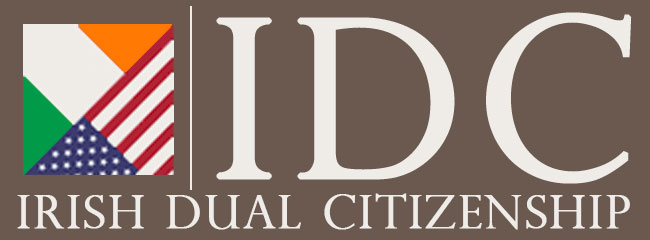Irish Celtic Dancing for Beginners
UNDERSTANDING THE HISTORY AND TRADITION OF IRISH CELTIC DANCE
Irish Celtic dancing is an exciting and energetic style of dance that has captivated audiences worldwide. Rooted in ancient Celtic traditions, it has evolved over the centuries, influenced by different regions and cultures. This dance style is known for its quick, intricate footwork and precise movements. It includes solo performances, like the famous step dance, and group dances, such as the lively céilí and set dances. Thanks to shows like Riverdance, Irish dance has gained global recognition and remains an important part of Irish culture. Whether you enjoy the discipline of solo dancing or the teamwork of group routines, Irish Celtic dance offers something for everyone.
History of Celtic Dancing
The history of Celtic dancing stretches back hundreds of years. It originated with the ancient Celts in Ireland and later developed into a structured art form. In the 17th and 18th centuries, traveling dance masters went from town to town teaching their unique styles, which varied by region. These dance masters helped shape what we now recognize as Irish dance, blending local traditions with their own creative moves.
Over time, Irish dance became more than just entertainment: It became a symbol of Irish identity, especially during Ireland’s struggles for independence. Thanks to organizations that standardized the dance and international shows like Riverdance, Celtic dancing continues to thrive. Today, it connects dancers to Ireland’s past while inspiring new generations to keep the tradition alive.
- A History: From Dance Master to Lord of the Dance
- A Brief History of Traditional Irish Step Dancing
- The History and Origins of Irish Dance
Famous Celtic Dancers
Many incredible performers have helped to bring Irish dance to the world stage. One of the most famous is Michael Flatley, the lead dancer of Riverdance and Lord of the Dance. His high-energy performances and innovative choreography made Irish dance more popular than ever. Jean Butler, his co-star in Riverdance, is known for her elegance and skill, inspiring many modern dancers. Other well-known dancers include Ciara Sexton, admired for her grace in Lord of the Dance, and James Devine, who holds the title of the fastest Irish dancer in the world. Colin Dunne, a nine-time world champion and former Riverdance lead, helped modernize Irish dance by adding more expressive and contemporary styles. These dancers have left a lasting impact on Celtic dancing, inspiring countless others to follow in their footsteps.
Celtic Dancing Around the World
Though it started in Ireland, Celtic dancing is now performed worldwide. Irish dance schools and performances can be found in North America, Europe, Australia, and even Asia. The World Irish Dancing Championships bring together competitors from many countries, showing how far this tradition has spread. Major productions like Lord of the Dance have toured globally, introducing millions of people to the beauty and energy of Irish dance. Whether performed in competitions, social céilís, or professional shows, Celtic dancing continues to bring people together, celebrating Irish heritage around the world.
- World Irish Dancing Championships
- How Irish Dancing Conquered the World
- Dancers Promote Awareness of Irish Heritage Through Performances
Glossary of Basic Celtic Dance Terms
Céilí: A traditional Irish group dance performed in formations of two to 16 dancers. It emphasizes teamwork, patterns, and simple footwork and is danced socially or competitively.
Feis: A competitive festival where dancers perform solo or in groups to showcase their skills. It’s a key part of the Irish dance community.
Hard Shoes: Heavier shoes with fiberglass or wooden tips and heels, used for dances like the hornpipe and treble jig. They create the iconic clicking sounds.
Hornpipe: A dance in 4/4 time known for its strong, rhythmic movements and often performed with hard shoes. It’s a staple in competitive Irish dance.
Jig: A lively dance in 6/8 time, including different styles like the light jig (quick and bouncy) and the slip jig (graceful and performed in 9/8 time)
Reel: A fast, lively dance in 4/4 time, often performed as a solo or group dance. It’s one of the most common dance types in Irish step dance.
Sean-Nós: An old-style, relaxed form of Irish dance featuring improvised, low-to-the-ground steps. It’s often performed solo and is deeply rooted in tradition.
Slip Jig: A graceful, flowing dance performed in 9/8 time, often by female dancers in soft shoes. It’s sometimes called the “ballet of Irish dance.”
Soft Shoes: Light, flexible shoes worn for dances like the reel, light jig, and slip jig. They allow for smooth, flowing movements.
Traveling Dance Masters: Historical figures who traveled across Ireland around the 18th century, teaching dance steps and shaping regional styles
Treble Jig: A fast, energetic dance performed in hard shoes, featuring rhythmic tapping and jumping movements
This page was last updated by Marco Permunian
Additional Irish resources:
- Irish Citizenship by Marriage
- Professional Services for Dual Irish Citizenship
- Benefits of Holding Irish Citizenship
- How to Get Irish Citizenship
- Irish Passport Requirements
- Parents and Grandparents Irish Citizenship Path
- Foreign Birth Registration for Irish Citizenship
- Irish Citizenship by descent
- Claiming Irish Citizenship from Great Grandparents


